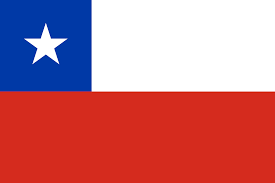 Chile had the leading economy in terms of real GDP growth in Latin America for two consecutive decades comprising the 1980s and 1990s. Moreover, just after reaching the new millennium, the economy began to cool off and surpassed by Peru along with Paraguay first and then Panama in terms of real GDP growth. Nevertheless, taking into account deceleration of export-oriented economies across the globe due to the steep slide in the demand for commodities, the productivity and diversification gains Chile realized had a ripple effect in terms of shielding the economy in subsequent years against unfavorable downturns. In fact, to make a long story short, what economists call the “Miracle of Chile” has its root in a plan made by a group of Chilean economists led by Emilio Sanfuentes and trained at the University of Chicago under the stewardship of Nobel laureate Milton Friedman right before the coup d’état against then President of the nation Salvador Allende. This plan is widely known as “El Ladrillo”, translated as “The Brick” in English, and consisted in the dismantlement of the centralized economic apparatus instituted under the Allende administration. Among the many measures that were taken, the main ones included privatizing entire industries that were nationalized, privatizing pension funds, privatizing health care, modernizing state works, liberalizing trade restrictions, lifting price controls, balancing the money supply in order to combat inflation and balancing the fiscal budget by cutting taxes while curbing government spending. Accordingly, these moves propelled the country forward except for the crisis Chile had in 1982 under then Minister of Finance Sergio de Castro. Indeed, there was a bank run and the government of Augusto Pinochet had to bail out several financial institutions. The crisis was caused primarily by pegging the value of the Chilean Peso with the American Dollar, hurting exports along the way as well as inducing a sharp decrease in private investment. However, Sergio de Castro was replaced as Minister of Finance with Rolf Lüders first and then Hernán Büchi right after the crisis and from then on, the country has experienced an outstanding track-record of robust economic growth using crawling bands for the domestic currency and since 1999 letting the Chilean Peso float with very few interventions under an inflation-targeting monetary regime while leading Latin America in several metrics. Furthermore, responsibility for this feat is shared among many members of an elite club of Chilean economists colloquially known as the “Chicago Boys”. These economists were the ones responsible for putting together the measures to be implemented in the thick plan they wrote and hence naming it as The Brick working alongside various government ministries as well as the Chilean Central Bank with the most important of them all being the Chilean Ministry of Social Development.
Chile had the leading economy in terms of real GDP growth in Latin America for two consecutive decades comprising the 1980s and 1990s. Moreover, just after reaching the new millennium, the economy began to cool off and surpassed by Peru along with Paraguay first and then Panama in terms of real GDP growth. Nevertheless, taking into account deceleration of export-oriented economies across the globe due to the steep slide in the demand for commodities, the productivity and diversification gains Chile realized had a ripple effect in terms of shielding the economy in subsequent years against unfavorable downturns. In fact, to make a long story short, what economists call the “Miracle of Chile” has its root in a plan made by a group of Chilean economists led by Emilio Sanfuentes and trained at the University of Chicago under the stewardship of Nobel laureate Milton Friedman right before the coup d’état against then President of the nation Salvador Allende. This plan is widely known as “El Ladrillo”, translated as “The Brick” in English, and consisted in the dismantlement of the centralized economic apparatus instituted under the Allende administration. Among the many measures that were taken, the main ones included privatizing entire industries that were nationalized, privatizing pension funds, privatizing health care, modernizing state works, liberalizing trade restrictions, lifting price controls, balancing the money supply in order to combat inflation and balancing the fiscal budget by cutting taxes while curbing government spending. Accordingly, these moves propelled the country forward except for the crisis Chile had in 1982 under then Minister of Finance Sergio de Castro. Indeed, there was a bank run and the government of Augusto Pinochet had to bail out several financial institutions. The crisis was caused primarily by pegging the value of the Chilean Peso with the American Dollar, hurting exports along the way as well as inducing a sharp decrease in private investment. However, Sergio de Castro was replaced as Minister of Finance with Rolf Lüders first and then Hernán Büchi right after the crisis and from then on, the country has experienced an outstanding track-record of robust economic growth using crawling bands for the domestic currency and since 1999 letting the Chilean Peso float with very few interventions under an inflation-targeting monetary regime while leading Latin America in several metrics. Furthermore, responsibility for this feat is shared among many members of an elite club of Chilean economists colloquially known as the “Chicago Boys”. These economists were the ones responsible for putting together the measures to be implemented in the thick plan they wrote and hence naming it as The Brick working alongside various government ministries as well as the Chilean Central Bank with the most important of them all being the Chilean Ministry of Social Development.
Furthermore, Chile today has a prosperous and dynamic economy well directed by one of the most solid democracies in Latin America. The pension system the country has is the most modern in Latin America with a participation rate of over half the labor force. The architect of it was José Piñera Echenique who is the brother of prominent billionaire and former Chilean President Sebastián Piñera Echenique. Likewise, the finances of the government are sound after the creation long ago of a sovereign-wealth fund to invest excess profits at CODELCO, the state-owned copper miner, in order to hedge for bad times. In addition, both the telecom and electricity sectors were privatized sharing the copper mining sector with domestic players and thus opening competition and investment. Today, copper mining accounts for 20% of GDP and 60% of exports. The other 40% of exports is shared mostly with winemakers, grape farmers, forestry enterprises and the fishing industry including salmon, Patagonian toothfish, sardine, tuna, Chilean jack mackerel, mussel, fish-meal and fish-oil. Moreover, Chile is the only nation in Latin America besides Mexico to be included in the prestigious Organization for Economic Cooperation and Development or OECD. In the same fashion, Chile is also the only nation in Latin America along with Uruguay to be considered a high-income economy by the World Bank Group and the only country across the subcontinent besides Argentina to be ranked as having a very high human development index by the United Nations. Another accomplishment the country has is having the most educated active labor force in Latin America with 29% of its participants today holding college degrees. Similarly, Chile enjoys the highest investment grade sovereign credit rating in Latin America by all three credit rating agencies being in the process the most successful “Pacific Puma”. Likewise, the country has the second lowest poverty rate in the region at 8% of its total population of 17 million in 2016. Nonetheless, inequality continues to be relatively high with an economy that reached a GINI coefficient for income distribution of 0.46 in 2016.
To conclude, Chile has a current account deficit of roughly 3% of GDP that happens to be totally offset by surpluses in other accounts consisting of foreign direct investment, which is a feature common among many developed economies like the US itself. Just last year, for instance, the country attracted inflows of $ 12.28 billion worth of FDI contributing to a total stock of FDI that amounted to $ 248 billion in 2016, both of these figures come from Statista. Likewise, with a GDP per capita expected to reach $ 25,000 this year when adjusted for purchasing power parity or PPP and a total nominal GDP expected to reach at least $ 250 billion this year as well, the country has the capacity to withstand the current depression in the price of commodities in order to keep on achieving progress and wealth building. In fact, the wealth building the nation has accomplished is unprecedented in the history of Latin America with stock market wealth currently reaching 100% of GDP. By the same token, the country has a household net worth estimated to reach close to $ 800 billion this year according to the Credit Suisse Group A.G. and thus reaching three times current total nominal GDP, a characteristic presently unmatched by any other country in Latin America except for Uruguay.
